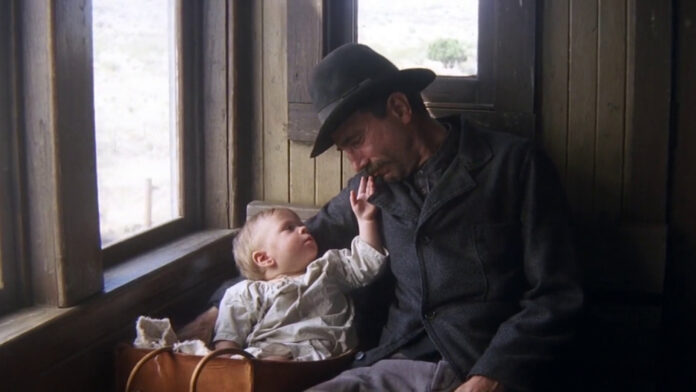In a nutshell
- The J cut is a cut that overlaps an upcoming scene’s audio with the current scene’s video and audio
- The J cut can be used for dialogue-heavy scenes but also for flashbacks or film openings
- The actual cut looks like a J in the edit
There are several edits at your disposal when it comes to cutting and piecing your video together in post-production. The J cut is one of them. Whether you’re working on a traditional narrative project, documentary/informational video, or even short-form marketing videos, the J cut can be crucial to getting your points across.
While this cut may have a funny-sounding name, it serves an important purpose. In this article, we will discuss what that purpose is and take a look at how the cut has been used in the cinema.
Understanding the J cut
The J cut is a variation of the “split edit” technique. Here the transition between audio and video happens at different times. They’re on split tracks and not 100 percent synced. Sometimes described as “overlapping audio/sound,” be careful not to confuse this with the idea of overlapping dialogue.
The J cut refers to an edit where audio from an upcoming scene/shot begins playing while the video of the preceding current scene is still going. This is the opposite of the L cut, which is when a current clip’s audio bleeds into the subsequent scene clip.
Essentially, the audience hears the next scene’s audio before they actually see it. The technique derives its name from the days of analog editing systems. When editors brought in audio and video pieces together, the transition moment on the film reel looked like the letter “J” — hence the name.
What does the J cut do?
The primary goal of the J cut is to create smoother transitions between cuts. Proper usage lends scenes a natural flow. Ultimately, this means you’re clearly conveying all the visual and audio information to viewers.
Take a dialogue scene, for example. When characters are in deep conversation in a scene, it’s common to use a variety of shots, such as wide, over-the-shoulder and insert shots, to make the scene more dynamic. Now, imagine a conversation between two characters where cuts are made only when they finish speaking. You will end up with something more like watching a tennis match as the scene jump back and forth between characters as they talk. This will not only bore your audience but also make the flow of the conversation clunky.
The J cut allows for a gentler transition between shots. You can hear Character B talking even though Character A’s reaction is the primary focus of the shot. This gives viewers time to process that the conversation has shifted to another character before the scene jumps to it.
Furthermore, keeping the visual element on Character A helps provide more emotional context for dialogue before cutting to the next character. Let’s say Character A finishes talking. As Character B begins, we see tears fall from Character A’s eyes before cutting away. This is a clear indicator that whatever was said took an emotional toll on character A. This is something that wouldn’t be immediately obvious if the scene cut away as soon as Character B begins talking.
Proper usage of the J cut could be the difference between your scene sounding like actors merely reading lines and audiences feeling they are witnessing a genuine conversation. Obviously, there are instances where harder cuts will make more sense in a scene. J cuts add a level of naturalness to the dialogue, ensuring effective conveyance of information and emotion.
Other uses for the J cut
By and large, the J cut is used most during dialogue-heavy sequences. That said, there are several other instances when J cuts come in handy.
Flashbacks
The most common usage for a J cut, aside from dialogue, is transitioning to a flashback. Because you’re hearing the audio before seeing the cut/transition, it prepares audiences for going backward in time. By bringing in the audio early, audiences have a heads-up to the shift before it actually happens.
“The Godfather Part II” (1974) uses this technique at multiple points. In one scene, a brooding Michael Corleone thinks back to a previous family dinner. Michael sits, and the conversation between others around the dinner table begins to seep into the shot. The J cut transition here cues audiences that the story’s timeline is shifting and gives a glimpse of Michael’s inner thoughts.
Perspective shifts
A J cut also offers a less jarring way to shift to the next scene or perspective. In these moments, audiences are transported to a completely different location or time, even jumping ahead in time. We see this technique frequently in Edgar Wright’s “Scott Pilgrim vs. The World” (2010). The film uses overlapping audio from the next scene to set the stage before the visuals switch, like with Scott’s dream sequences or jumping to a music venue.
Similarly, “Eternal Sunshine of the Spotless Mind” (2004) uses the technique for both flashbacks. For example, the film uses it in a scene that cuts to technicians working in Joel’s apartment. This indicates to audiences that they’re about to transition to the “real world” outside of Joel’s mind. This is helpful, considering how the film frequently bounces around in time.
Film openings
Among the most recognizable uses of the J cut are from a project’s opening sequence. How many times have you seen a movie open with a voiceover on a blank screen? A character’s dialogue tells audiences what they’re about to be thrust into before the image actually comes onscreen. Several war movies utilize this opening style. Rather than using dialogue, however, the sounds of gunfire and combat are heard before audiences are dropped into the scene.
Setting the stage and creating significance
J cuts can have a powerful effect on a scene. Separating the audio from the visuals imparts a sense of significance to those elements. Audiences are forced to linger on specific things, which prepares them for what’s next.
The opening of “There Will Be Blood” (2007) contains a great example of this effect. The first words spoken come from Daniel Planview, who is talking to the squabbling landowners. Even as we witness a touching moment between him and the young child, all we hear is Daniel talking about being an “oil man.” It’s a lengthy J cut, lasting nearly twenty seconds before the visual transition occurs. This informs audiences that Daniel is a businessman first and everything else second.
The opening to “Indiana Jones and the Raiders of the Lost Ark” (1981) provides a similar example. Indiana Jones swaps out the bag of sand for the idol, and the camera stays on him as he walks away. Audiences, however, begin to hear the sounds of the ancient temple creaking and rumbling. It’s a clue that something has gone wrong and something massive is about to happen. In this way, audiences are prepared for the upcoming mayhem when the film finally cuts to a shot of the room falling apart.
Don’t underestimate the J cut
J cuts significantly impact the flow of the story you’re telling. It’s another tool to help you control the information you want to deliver to audiences. Whether it’s creating a natural flow for dialogue, smoothing a transition, jumping through time, or simply setting the stage for the next sequence, the J cut is a crucial editing technique.








